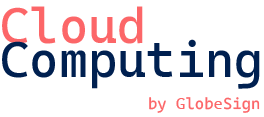Table of Contents
Understanding Cloud Cost Optimization
Cloud cost optimization refers to the process of monitoring, managing, and reducing your cloud spending while maximizing resource efficiency. Think of it as tuning a car. You want it to run smoothly, efficiently, and at optimal performance without burning too much fuel – in this case, your budget.
Just like a vehicle consumes fuel, your cloud services consume financial resources. If left unchecked, costs can spiral out of control, leading to inefficient expenditure that diminishes the value of the cloud services you are using.
Why is Cloud Cost Optimization Important?
The importance of cloud cost optimization can be illustrated through several key points:
- Financial Efficiency: Organizations can save significant amounts of money by eliminating wasteful spending on unused or underutilized resources.
- Maximizing ROI: By strategically managing cloud assets, businesses can ensure they are deriving maximum value from their investments.
- Scaling Effectively: A well-optimized cloud environment allows for better scalability as businesses grow without being overwhelmed by costs.
- Competitive Advantage: Companies that manage their cloud expenditures effectively can reallocate those savings to innovate or invest in other business areas.
Real-World Examples of Cloud Cost Optimization
Let’s consider a few companies that have effectively implemented cloud cost optimization strategies:
- Netflix: By optimizing its cloud resources and dynamic scaling strategy, Netflix was able to reduce costs while maintaining excellent service availability. They utilize automation to spin up and down instances based on demand, ensuring that they only pay for the resources they need.
- Airbnb: The company has mastered the art of reserved instances usage, which allows them to save significantly by committing to using certain resources over a period while benefiting from lower pricing. This proactive approach helped Airbnb to manage their $20 million annual cloud spending more effectively.
- Slack: Slack employed cloud cost analysis tools to gain insight into their spending patterns and resource usage. By identifying underused resources, they have been able to increase efficiency and lower their cloud expenditure.
Strategies for Mastering Cloud Cost Optimization
Now that we’ve established the importance of cloud cost optimization and highlighted some real-world examples, let’s explore strategies that organizations can utilize to optimize their cloud costs.
1. Conduct Regular Resource Audits
Regularly evaluating your cloud usage helps identify:
- Unused or underutilized resources
- Idle servers
- Outdated configurations
Implementing a strategy for consistent audits can uncover hidden costs that can be eliminated.
2. Use Cost Management Tools
Cloud service providers often provide native tools for monitoring costs. Additionally, consider third-party tools like:
These tools can analyze spending patterns, forecast future costs, and offer actionable recommendations.
3. Leverage Reserved Instances and Savings Plans
Both reserved instances and savings plans provide significant discounts compared to on-demand pricing. However, consider the following:
- Analyze your usage patterns to ensure that you can commit to a resource for the long term.
- Understand the terms and conditions to avoid penalties.
4. Implement Rightsizing
Rightsizing involves optimizing resource allocation based on workload needs. To effectively rightsize resources:
- Analyze current resource consumption over time.
- Identify opportunities to downsize or even upgrade resources for better efficiency.
5. Auto Scaling
Implement auto-scaling strategies to dynamically adjust resources based on demand:
- Auto-Scaling Groups (ASGs) allow automatic provisioning and de-provisioning of cloud resources based on predetermined metrics.
- This ensures that you only pay for the resources you need when you need them.
6. Set Budgets and Alerts
Set actionable budgets within your cloud provider’s management console. Utilize alerts to notify relevant stakeholders in case spending exceeds predetermined limits.
7. Monitor Performance Metrics
Establish key performance indicators (KPIs) to assess resource performance relative to costs. Some critical KPIs to track include:
- Cost per transaction
- Usage costs vs. budget
- Resource utilization percentages
Benefits of Cloud Cost Optimization
Optimizing your cloud costs comes with numerous benefits, including:
- Cost Savings: Substantial reductions in monthly cloud bills when effectively implemented.
- Improved Resource Utilization: Better allocation leads to more efficient cloud environments.
- Increased Agility: Organizations can respond quickly to business demands while managing costs.
- Strategic Insights: Ongoing cost analysis provides data that can influence future cloud strategies.
Conclusion: The Future of Cloud Cost Optimization
In the rapidly evolving technological landscape, effectively managing cloud costs is essential for sustained success. By implementing strategic cost optimization measures, organizations can not only save money but also maximize their cloud investments. As businesses continue to migrate to the cloud, gaining control over cloud expenditure becomes a critical differentiator in maintaining a competitive edge.
As you consider your cloud strategy, remember that cost optimization is not a one-time project but an ongoing process. Continuously analyze, refine, and adapt your strategies to align with business objectives while ensuring that you’re operating in a financially sustainable manner.
Cloud cost optimization isn’t just about cutting costs; it’s about enabling growth and innovation without financial strain. By following the strategies outlined in this post, you can set your organization on a path to mastering your cloud costs and embracing the many opportunities that the cloud offers.
Frequently Asked Questions
What is Cloud Cost Optimization?
Cloud cost optimization refers to the practices used to manage and reduce cloud expenses while maximizing efficiency in resource use.
Why is Cloud Cost Optimization important?
It helps organizations save money, maximize ROI, and efficiently scale as business needs change.
How can I start optimizing my cloud costs?
Begin by conducting regular resource audits and utilizing cost management tools available through your cloud provider.
What tools can assist in cloud cost optimization?
Tools such as CloudHealth, CloudCheckr, and Spot.io are great options.
